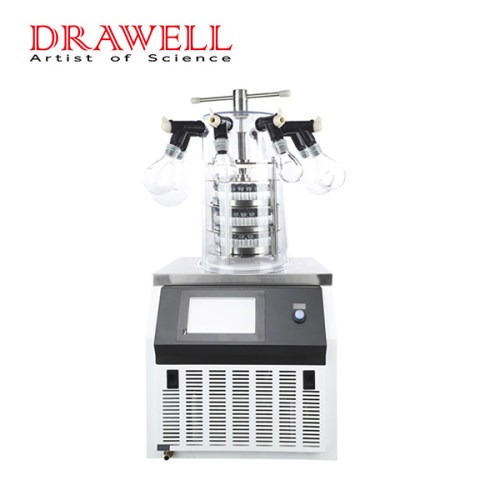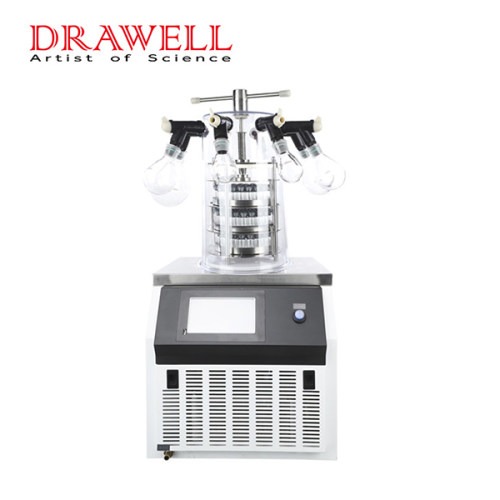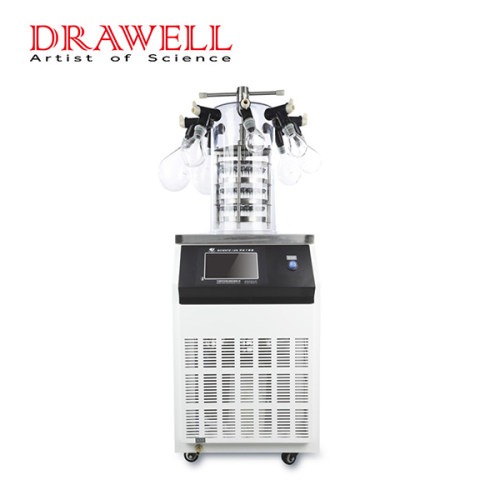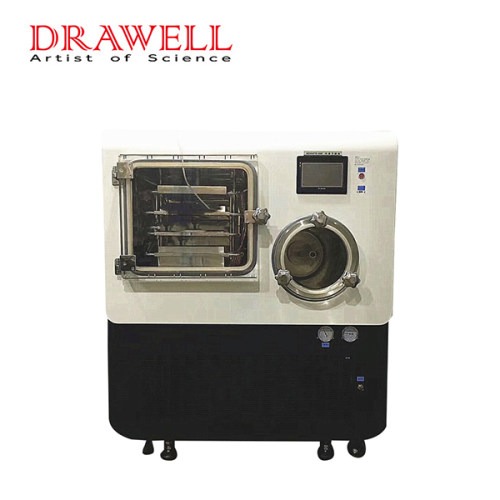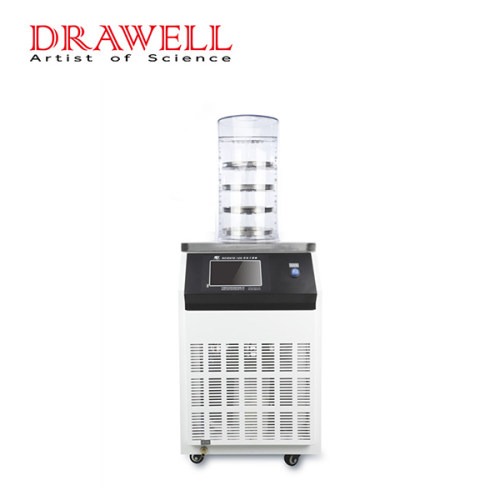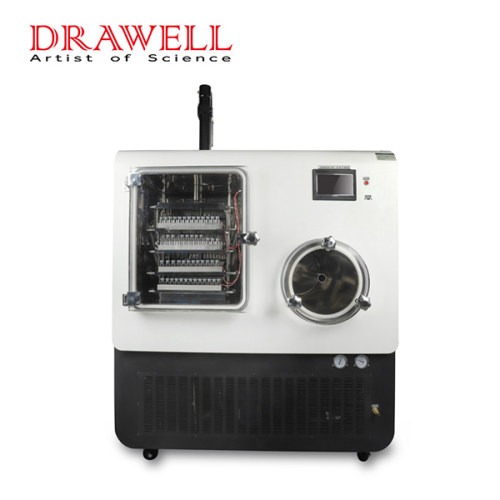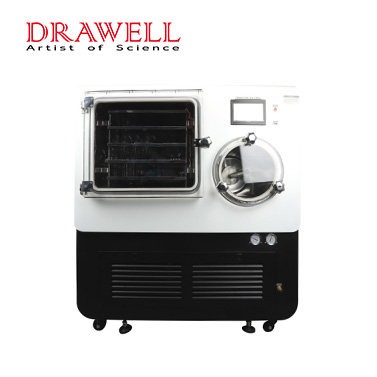The preservation of biological samples is paramount for maintaining sample integrity and extending their shelf life. Among various preservation methods, lab freeze dryers have emerged as indispensable tools for preserving delicate biological specimens while retaining their biochemical properties. In this article, we explore the effectiveness of lab freeze dryers in preserving biological samples and their significance in various scientific and medical endeavors.
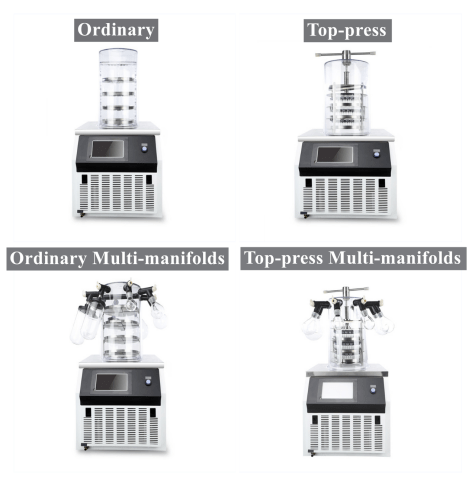
The Role of Lab Freeze Dryers in Preserving Biological Samples
Preservation of Biological Samples
Biological samples, including tissues, cells, proteins, enzymes, vaccines, and pharmaceuticals, are highly susceptible to degradation and microbial growth if not properly preserved. Lab freeze dryers address this challenge by gently removing water from samples without subjecting them to high temperatures, preserving their structural integrity and biochemical properties. This ensures that the samples remain stable and viable for extended periods, even at room temperature.
Effectiveness of Freeze Drying
The effectiveness of freeze drying lies in its ability to prevent ice crystals from damaging the cellular structure of biological samples. By freezing the samples and then sublimating the ice under vacuum conditions, freeze dryers remove moisture while avoiding the phase transition from solid to liquid, which can cause cellular damage. This gentle dehydration process maintains the original characteristics of the samples, including their morphology, enzymatic activity, and antigenicity.
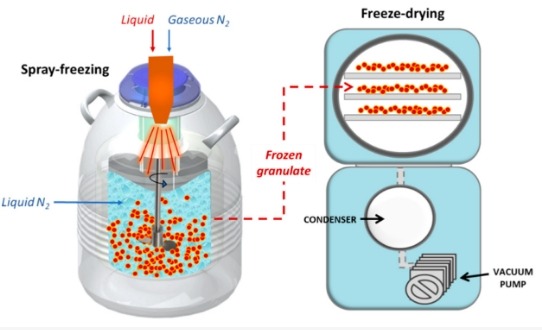
Key Advantages of Lab Freeze Dryers in Preserving Biological Samples
1. Maintaining Sample Integrity
Lab freeze dryers preserve the native structure and composition of biological samples by removing water molecules without subjecting the samples to high temperatures. This gentle dehydration process prevents denaturation, degradation, and structural changes in the samples, ensuring that their original characteristics are retained.
2. Long-Term Stability
Freeze-dried samples have an extended shelf life compared to samples preserved by other methods. By removing moisture, freeze drying inhibits biochemical reactions and microbial growth, thereby prolonging the stability and viability of biological materials for months or even years.
3. Retention of Bioactivity
Freeze drying preserves the bioactivity of sensitive biological molecules, including enzymes, antibodies, and vaccines. By maintaining the native conformation and functionality of these molecules, lab freeze dryers ensure that the preserved samples remain biologically active and suitable for a wide range of applications, such as enzymatic assays, immunoassays, and vaccine production.
4. Reduced Weight and Volume
Freeze-dried samples are lightweight and compact, making them easy to store, transport, and handle. Unlike samples preserved in liquid form or by other methods, freeze-dried samples do not require specialized storage conditions such as refrigeration or freezing, reducing storage costs and logistical challenges.
5. Ease of Reconstitution
Freeze-dried samples can be easily reconstituted by adding a suitable solvent, such as water or buffer solution. This rehydration process restores the samples to their original state, allowing researchers to quickly and conveniently use the preserved samples for experiments, analyses, or applications.
6. Versatility
Lab freeze dryers can accommodate various types and sizes of biological samples, ranging from small tissue specimens to large-scale production batches. This versatility enables researchers, clinicians, and manufacturers to preserve a wide range of biological materials, including tissues, cells, proteins, nucleic acids, vaccines, and pharmaceuticals, for diverse applications in research, diagnostics, and therapeutics.
7. Reduced Contamination Risk
Freeze drying minimizes the risk of contamination and microbial growth by removing moisture from the samples and creating an inhospitable environment for microorganisms. This helps maintain the purity and integrity of biological samples, ensuring reliable and reproducible results in downstream analyses and applications.

Numerous Applications of Lab Freeze Dryers in Preserving Biological Samples
1. Biomedical Research
Freeze drying is widely used in biomedical research to preserve biological samples for various studies, including molecular biology, cell culture, and tissue engineering. Freeze-dried samples such as tissues, cells, proteins, and nucleic acids are essential resources for studying disease mechanisms, drug discovery, and regenerative medicine.
2. Clinical Diagnostics
Freeze-dried reagents, controls, and calibrators are integral components of diagnostic assays used in clinical laboratories. Freeze drying ensures the stability and long-term storage of diagnostic materials, including enzymes, antibodies, antigens, and patient specimens, thereby ensuring the accuracy and reliability of diagnostic tests for diseases, infections, and genetic disorders.
2. Pharmaceutical Development
Freeze drying plays a crucial role in pharmaceutical development for the formulation and stabilization of drug products, vaccines, and biologics. Freeze-dried pharmaceuticals offer improved stability, shelf life, and patient convenience compared to liquid formulations. Freeze-dried vaccines, in particular, are easier to store, transport, and administer, making them essential for vaccination programs worldwide.
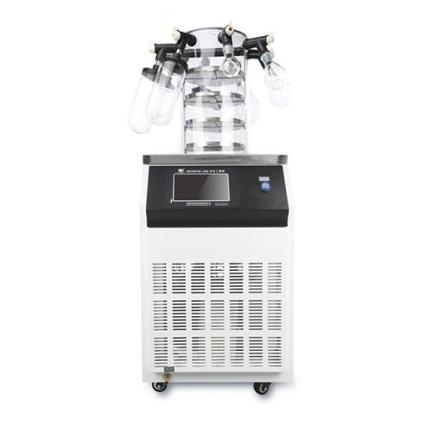
3. Biobanking and Biorepositories
Biobanks and biorepositories utilize freeze drying to preserve biological specimens for future research and clinical applications. Freeze-dried samples stored in biobanks include tissues, cells, blood components, and DNA/RNA extracts. These well-preserved samples serve as valuable resources for epidemiological studies, biomarker discovery, and personalized medicine initiatives.
4. Food and Agricultural Sciences
Freeze drying is used in food and agricultural sciences to preserve biological samples such as fruits, vegetables, meat, and dairy products. Freeze-dried foods have a longer shelf life and retain their nutritional value, flavor, and texture compared to conventionally dried or canned foods. Freeze-dried agricultural samples are also used for research in crop breeding, food safety, and nutrition.
5. Environmental Monitoring
Freeze drying is employed in environmental monitoring to preserve biological samples collected from various ecosystems, including soil, water, and air. Freeze-dried environmental samples contain intact microbial communities, DNA/RNA extracts, and biomolecules that can be analyzed to assess biodiversity, ecological health, and environmental pollution.
6. Forensic Science
Freeze drying is used in forensic science to preserve biological evidence collected from crime scenes, including bloodstains, saliva, hair, and tissues. Freeze-dried forensic samples retain their DNA integrity and can be stored for long periods without degradation, enabling accurate identification and analysis of biological evidence in criminal investigations.
7. Veterinary Medicine
Freeze drying is applied in veterinary medicine to preserve biological samples from animals for research, diagnosis, and treatment. Freeze-dried animal tissues, cells, and bodily fluids are used in veterinary pathology, infectious disease research, and pharmaceutical development for veterinary drugs and vaccines.
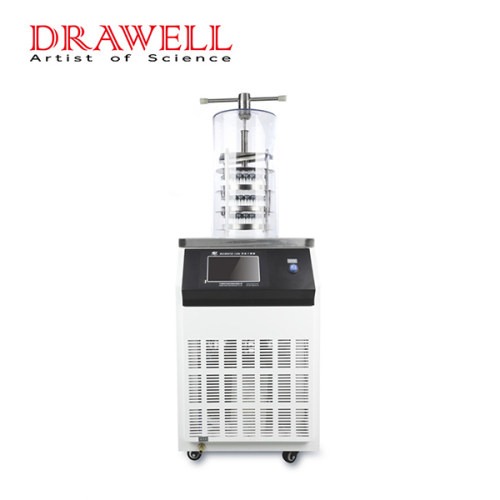
Conclusion
Lab freeze dryers play a pivotal role in preserving biological samples, offering unmatched effectiveness in maintaining sample integrity, extending shelf life, and facilitating their use in research and healthcare. As advancements in freeze drying technology continue to improve efficiency, scalability, and versatility, the importance of lab freeze dryers in scientific research and medical diagnostics will only continue to grow.

